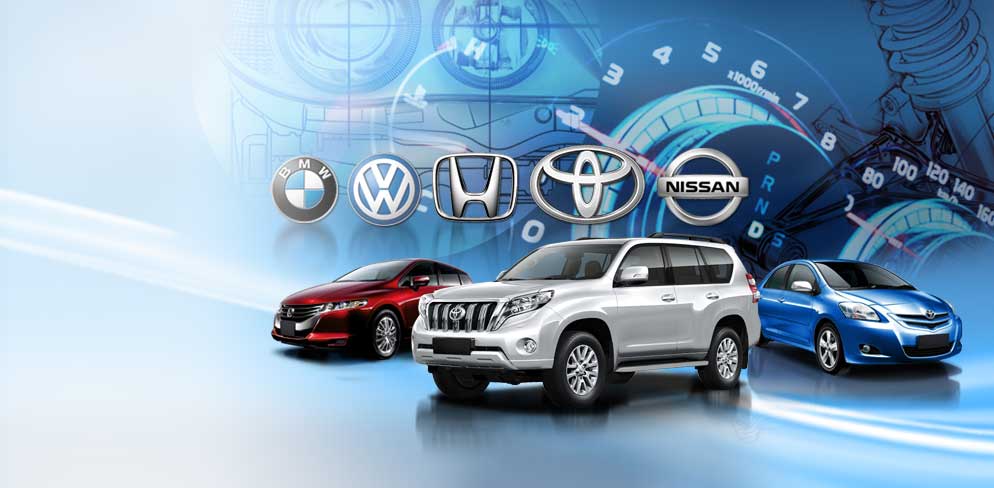Explore the Future of Japan’s Auto Industry: Trends, Insights, and Expert Advice
Japan’s automotive industry has long been a global leader, known for innovation, precision, and efficiency. As technology evolves and global demands shift toward cleaner, smarter transportation, the future of Japan’s car manufacturing sector is being reshaped. This article offers a detailed and educational overview of where the industry stands today and what lies ahead.
Understanding the Japanese Automotive Industry
The Japanese automotive industry is one of the largest in the world. Home to globally recognized brands like Toyota, Honda, Nissan, Mazda, and Subaru, Japan has built a legacy on reliability, fuel efficiency, and continuous innovation. The industry is deeply connected to the country’s economy, employing millions and driving exports.
In recent years, global environmental concerns, digital transformation, and rising competition have prompted a shift. The focus is no longer just on building vehicles but on redefining mobility—through electric vehicles (EVs), autonomous driving, connected cars, and smart manufacturing systems.
Why This Industry Matters More Than Ever
The automotive sector plays a critical role in Japan’s GDP and employment. As of 2023, it accounts for nearly 18% of Japan’s total exports. This matters not just to businesses but also to the everyday consumer, policymakers, tech developers, and the global economy.
Key issues the industry helps address:
-
Environmental sustainability through reduced emissions and energy-efficient designs
-
Job creation and skill development in engineering, AI, and robotics
-
Urban mobility challenges in aging societies like Japan’s
-
Global competition with emerging markets and tech-based mobility companies
Understanding its transformation offers valuable insights into how technology, sustainability, and policy intersect in shaping modern economies.
Recent Trends and Industry Updates (2023–2025)
Shift Toward Electrification
Japan has historically lagged behind the US, China, and Europe in EV adoption. However, change is accelerating. In 2023, Toyota announced a major investment in next-generation battery technology, aiming to mass-produce solid-state batteries by 2027. Honda and Nissan have also expanded their EV lineups with hybrid and full-electric offerings.
EV market share in Japan (2023):
| Type | Market Share (%) |
|---|---|
| Battery EVs | 2.7% |
| Hybrids | 40% |
| Plug-in Hybrids | 1.5% |
Emphasis on Hydrogen Vehicles
Japan continues to invest in hydrogen fuel cell vehicles (FCVs), viewing hydrogen as a long-term solution. Toyota’s Mirai and Honda’s Clarity represent ongoing efforts in this space. The government is supporting hydrogen infrastructure with fueling stations and subsidies.
Smart Mobility and Autonomous Driving
Companies like Nissan and Toyota are testing Level 3 autonomous driving features. In 2023, Honda began limited sales of its Legend model with Level 3 autonomy in select urban zones.
Global Supply Chain Realignment
Due to geopolitical tensions and chip shortages post-COVID, Japanese automakers have diversified supply chains. In 2024, Mazda and Subaru partnered with domestic tech firms to secure semiconductor production locally.
Government Regulations and Policy Support
The Japanese government plays an active role in the future of its auto industry. Several policy shifts are guiding the transformation:
1. Green Growth Strategy
Introduced in 2020 and updated in 2023, this plan outlines Japan’s vision to become carbon-neutral by 2050. The automotive sector is central to this strategy, with targets to end sales of new gasoline-only cars by mid-2030s.
2. Subsidies and Incentives
To encourage EV and FCV adoption, the government provides:
-
Purchase subsidies (up to ¥600,000 or ~$4,000 per vehicle)
-
Tax reductions on eco-friendly vehicles
-
Funding for battery R&D and local production
-
Grants for installing EV charging infrastructure
3. Safety and Data Privacy Laws
As autonomous and connected vehicles rise, Japan enforces strict laws around:
-
Driver accountability for Level 3+ autonomous systems
-
Data encryption and privacy for connected vehicles
-
Cybersecurity standards for vehicle software updates
Useful Tools and Resources
Whether you're a student, policy analyst, or auto enthusiast, the following tools can help deepen your understanding of Japan’s automotive future:
Government and Industry Portals
-
METI (Ministry of Economy, Trade and Industry): www.meti.go.jp
-
Japan Automobile Manufacturers Association (JAMA): www.jama-english.jp
Research Databases
-
Statista Automotive Japan Reports
-
Nikkei Asia Industry Tracker
-
IEA Global EV Outlook
Apps and Tools
-
PlugShare: EV charging station locator
-
CarScanner: Vehicle diagnostics for smart and hybrid vehicles
-
Honda SENSING / Toyota T-Mate apps: For real-time car safety and driving data
Frequently Asked Questions
What is the future of electric vehicles in Japan?
Japan aims to eliminate new gasoline-only vehicle sales by the mid-2030s. EVs and hybrids will dominate the market, supported by government incentives and improved battery technology.
How does Japan compare to other countries in autonomous driving?
Japan is catching up with the US and China. Brands like Honda and Nissan are testing Level 3 autonomy with government oversight, prioritizing safety and limited urban deployment.
Are hydrogen vehicles still a priority in Japan?
Yes. Unlike many other countries, Japan continues to invest heavily in hydrogen fuel cell infrastructure, with government backing and public-private R&D partnerships.
What are the main challenges facing Japan’s auto industry?
Challenges include global competition in EVs, chip shortages, high production costs, and slower consumer adoption of new technologies within the domestic market.
Is Japan ready for full vehicle automation?
Not yet. While Level 3 features are rolling out, full automation (Level 4/5) requires legal, ethical, and infrastructure considerations that are still in progress.
Final Thoughts
Japan’s automotive industry is undergoing a profound transformation. As the world moves toward greener, smarter, and safer vehicles, Japan continues to balance tradition with innovation. Government policies, corporate strategies, and consumer behavior are all shaping the road ahead.
Whether through the expansion of EVs, breakthroughs in hydrogen fuel, or cautious steps toward autonomy, Japan remains a key player in the global mobility revolution. For anyone watching the future of transportation, the Japanese auto industry is a critical sector to understand.




